INDIA
Bangalore

Bangalore
Bangalore
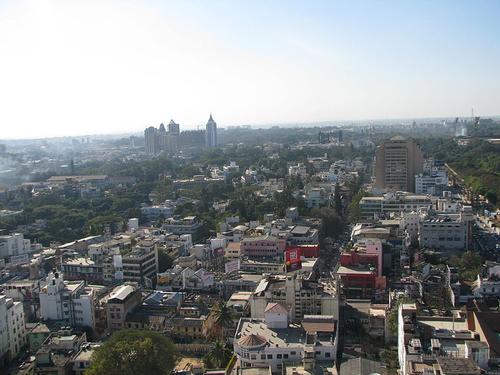 BangalorePhoto: Amol.Gaitonde CC 3.0 Unported no changes made
BangalorePhoto: Amol.Gaitonde CC 3.0 Unported no changes made
Bangalore officially Bengaluru is the capital of the Indian state of Karnataka. The city is also known as the Garden City because of its beautiful parks and gardens. Bangalore is located on the Deccan Plateau. Bangalore is the fourth most populous city in India. Today, Bangalore is a large city with a lot of knowledge industry. Many well-known colleges and research institutions in India are located here as well as software companies and aerospace, telecommunications and defense companies. Bangalore is also known as the Silicon Valley of India. It is an important economic and cultural center and the fastest growing major metropolis in India.
Location
 Bangalore PanoramaPhoto: Nikhil Verna (CC BY-SA 2.0) no changes
Bangalore PanoramaPhoto: Nikhil Verna (CC BY-SA 2.0) no changes
Bangalore is located in the southeast of the South Indian state of Karnataka. The coordinates are 12.97 ° North latitude and 77.56 ° East longitude. Bangalore is located at an average elevation of 920 m (3,018 ft) and covers an area of 741 square kilometers. The highest point is Vidyaranyapura Doddabettahalli at 962 meters. No major rivers run through the city, the Arkavathi and South Pennar intersect about 60 km north of Bangalore.
Weather
Bangalore has a tropical weather type with wet and dry seasons. Due to the high elevation of Bangalore, temperatures are somewhat moderate, with occasional heat waves in the summer. The coolest month is January with an average daily temperature of 15.1 ° C and the hottest month is April with an average daily temperature of 33.6 ° C. The highest temperature ever recorded in Bangalore is 38.9 ° C and the lowest ever 7.8 ° C. In Bangalore it rains due to both the northeast and southwest monsoons and the wettest months are September, October and August. In summer, the heat is often tempered by thunder. The heaviest rainfall of 179 millimeters was recorded in 1997.
History
Bangalore was founded by Kempe Gowda I, a vassal of the Vijayanagara Empire. He built a mud fortress and a Nandi temple in the vicinity of present-day Bangalore in 1537. The city had two main streets - Chikkapete Street, which ran east-west, and Doddapete Street, which ran north-south. The intersection made Doddapete Square the center of Bangalore. His successor, Kempe Gowda II, built four towers that marked the boundary of Bangalore. After the fall of the Vijayanagara Empire, Bangalore was ruled by numerous rulers.
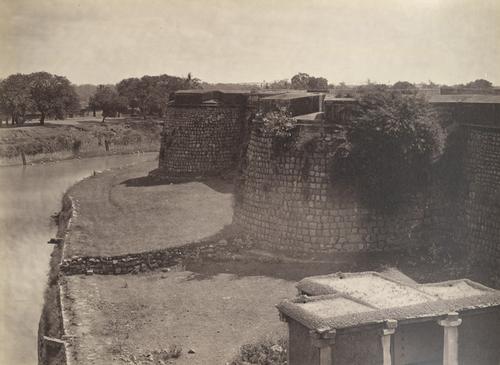 Bangalore Fort in 1860Photo: Public domain
Bangalore Fort in 1860Photo: Public domain
The Kingdom of Mysore moved the capital from Mysore to Bangalore in 1831. Two important events during this period contributed to the rapid growth of the city. The introduction of the telegraph and the rail connection with Madras in 1864. The Bangalore Palace from 1887 was home to the rulers of Mysore.
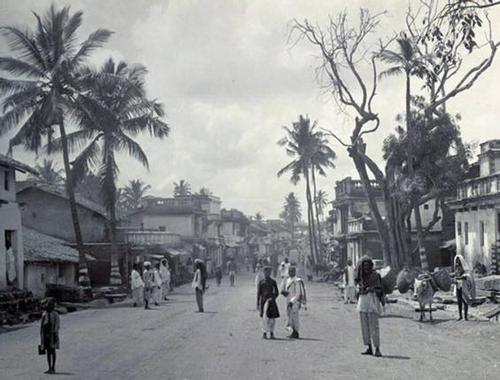 Bangalore in 1890Photo: Public domain
Bangalore in 1890Photo: Public domain
In 1898, a plague epidemic sowed death and destruction among the people of Bangalore. Bangalore became the first city in India with electricity in 1906, powered by the Shivanasamudra hydroelectric power station. In 1927, the ruler Krishnaraja Wodeyar IV celebrated the silver jubilee of his reign. Bangalore's reputation as the Garden City of India was shaped by the creation of parks to beautify the city on the occasion of the anniversary. After Indian independence in August 1947, Bangalore remained part of the Mysore state. Rajapramukh was the Maharaja of Mysore at the time.
Bangalore grew in the decade from 1940 to 1950 and from 1970 to 1980. Many immigrants from northern Karnataka settled in the city during those years. Bangalore's industrial base was strengthened by the establishment of large private companies, such as the Motor Industries Company and information technology companies. At the end of the 20th century, Bangalore was declared the Silicon Valley of India.
Sights
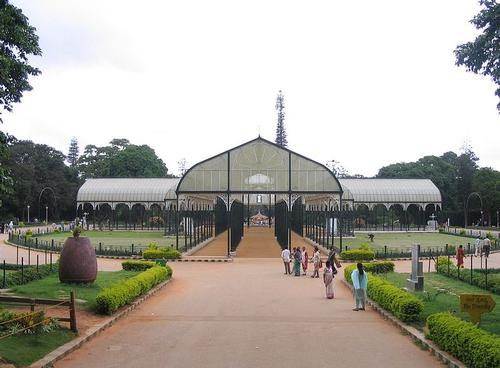 Lal Bagh BangalorePhoto: Kprateek88 CC 3.0 Unported no changes made
Lal Bagh BangalorePhoto: Kprateek88 CC 3.0 Unported no changes made
There are many places of interest in Bangalore, the gardens are an important trademark of the city. Lal Bagh is a botanical garden that was created by Hyder Ali in 1760. More than 1000 species of plants grow in this park and there is a large greenhouse. The park is known for its annual flower show. The garden is bordered by the towers built by Kempe Gowda. In the garden is also Lal Bagh Rock, which is three million years old. Cubbon Park is located in the heart of the city. The park was created in 1884 by Major General Richard Sankey. The park has many special trees and plants.
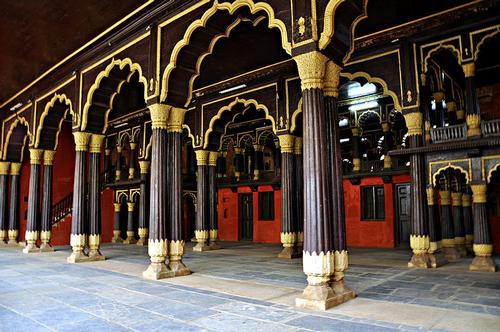 Tipu Sultan's Summer Palace BangalorePhoto: Pavithrah CC 3.0 Unported no changes made
Tipu Sultan's Summer Palace BangalorePhoto: Pavithrah CC 3.0 Unported no changes made
Tipu Sultan's Summer Palace was built in 1791. This beautiful two-storey, beautifully decorated wooden building, with gossamer-carved columns, arches and balconies is located near the market. Today it is a museum that contains artifacts of art from the Hyder-Tipu period.
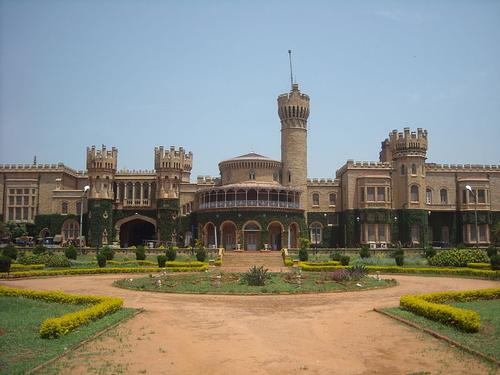 Bangalore PalacePhoto: SMit224 CC 3.0 Unported no changes made
Bangalore PalacePhoto: SMit224 CC 3.0 Unported no changes made
Located near Mekhri Square and the station, Bangalore Palace (1862) was built as a smaller replica of Windsor Castle in England. Mayo Hall was designed in memory of Lord Mayo and is considered one of the finest designs of British architecture in Bangalore.
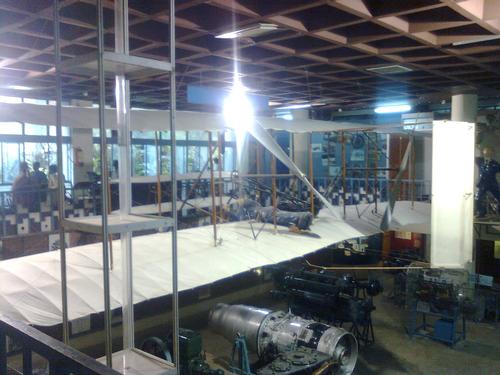 Viswesarayya Museum BanglorePhoto: PP Yoonus CC 3.0 Unported no changes made
Viswesarayya Museum BanglorePhoto: PP Yoonus CC 3.0 Unported no changes made
There are many interesting museums and galleries that tourists can visit in Bangalore. The Visvesvaraya Museum displays industrial and technological designs. At the HAL Aerospace Museum, visitors can view exhibitions of aircrafts, helicopters, aircraft engines and models. The entire aviation history of India is displayed. In Bangalore is a gallery dedicated to a folk art of India managed by the MITHILAsmita Foundation.
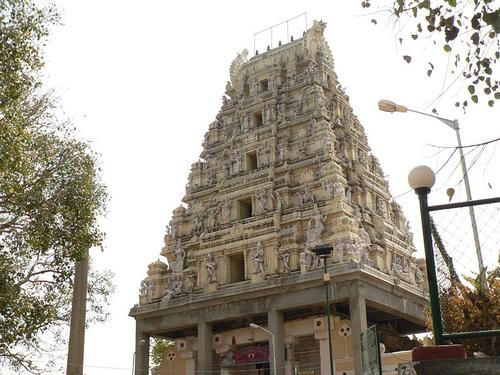 Bangalore Bull TemplePhoto: Marc Smith CC 2.0 Generic no changes made
Bangalore Bull TemplePhoto: Marc Smith CC 2.0 Generic no changes made
The Bull Temple dates from the time of Kempe Gowda I and is reminiscent of the 16th century Dravidian style in architecture. It has a huge granite monolith from Nandi. The temple is located at the bull temple road. The Basavangudi Shri Nimishamba Devi temple is built in the traditional Parashurama Kshetra architectural style and is a unique temple in Bangalore. The temple was built by the worshipers of Shri Nimishamba Devi. The ISKCON temple (International Society for Krishna Consciousness) is a harmonious and graceful building. The Krishna temple is a mix of modern technology and spiritual harmony and it occupies an area of seven hectares. It is a mix of traditional and modern architecture. St. Mary's Basilica is the oldest church in Bangalore, with the status of a small basilica. The church is known for the festivities that take place during the Feast of St. Mary in September. St Patrick's Church was built in 1844, making it one of the oldest churches in Bangalore. The church is located on Residency Road. Masjid-e-Khadria is one of the most beautiful mosques in Bengaluru on Millers Road.
Tips
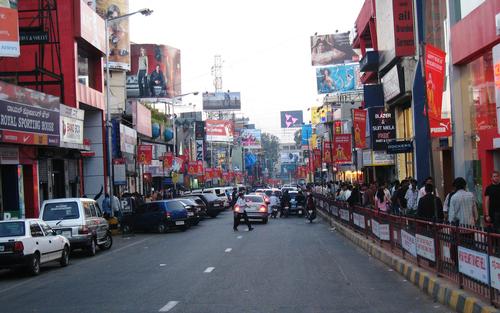 Bangalore Brigade RoadPhoto: Charles Haynes (CC BY-SA 2.0) no changes made
Bangalore Brigade RoadPhoto: Charles Haynes (CC BY-SA 2.0) no changes made
Brigade Road is the busiest commercial center of Bangalore, where you can find all kinds of shops. Mantri Square is the largest shopping center in India and South Asia
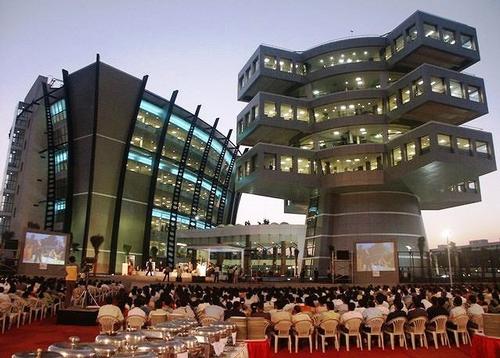 Bangalore Bagmane Tech ParkPhoto: Mohseen Khan CC 3.0 Unported no changes made
Bangalore Bagmane Tech ParkPhoto: Mohseen Khan CC 3.0 Unported no changes made
There are many IT parks in Bangalore: ITPL, Bagmane Tech Park, Manyata Tech Park, Global Village Tech Park, Kalyani Magnum Tech Park, Electronics City Phase I & II, Embassy Golf Links, Eco Space Tech Park, Prestige Tech Park, Salarpuria Tech Park, Brigade Tech Park, and Vrindavan Tech Park. The innovative movie city includes an amusement park and theme park and studio facilities.
Useful links Bangalore
BBC Country ProfilesWorld Fact Book Explore all Countries
How to call
Last updated November 2025
Copyright: Team - The World of Info